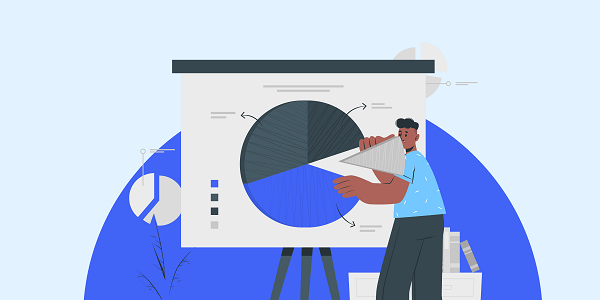Residential Proxies
Allowlisted 200M+ IPs from real ISP. Managed/obtained proxies via dashboard.

Proxies Services
Residential Proxies
Allowlisted 200M+ IPs from real ISP. Managed/obtained proxies via dashboard.
Residential (Socks5) Proxies
Over 200 million real IPs in 190+ locations,
Unlimited Residential Proxies
Unlimited use of IP and Traffic, AI Intelligent Rotating Residential Proxies
Static Residential proxies
Long-lasting dedicated proxy, non-rotating residential proxy
Dedicated Datacenter Proxies
Use stable, fast, and furious 700K+ datacenter IPs worldwide.
Mobile Proxies
Dive into a 10M+ ethically-sourced mobile lP pool with 160+ locations and 700+ ASNs.
Scrapers
Collection of public structured data from all websites
Proxies
Residential Proxies
Allowlisted 200M+ IPs from real ISP. Managed/obtained proxies via dashboard.
Starts from
$0.6/ GB
Residential (Socks5) Proxies
Over 200 million real IPs in 190+ locations,
Starts from
$0.03/ IP
Unlimited Residential Proxies
Unlimited use of IP and Traffic, AI Intelligent Rotating Residential Proxies
Starts from
$1816/ MONTH
Rotating ISP Proxies
ABCProxy's Rotating ISP Proxies guarantee long session time.
Starts from
$0.4/ GB
Static Residential proxies
Long-lasting dedicated proxy, non-rotating residential proxy
Starts from
$4.5/MONTH
Dedicated Datacenter Proxies
Use stable, fast, and furious 700K+ datacenter IPs worldwide.
Starts from
$4.5/MONTH
Mobile Proxies
Allowlisted 200M+ IPs from real ISP. Managed/obtained proxies via dashboard.
Starts from
$1.2/ GB
Scrapers
Web Unblocker
Simulate real user behavior to over-come anti-bot detection
Starts from
$1.2/GB
Serp API
Get real-time search engine data With SERP API
Starts from
$0.3/1K results
Scraping Browser
Scale scraping browsers with built-inunblocking and hosting
Starts from
$2.5/GB
Documentation
All features, parameters, and integration details, backed by code samples in every coding language.
TOOLS
Resources
Addons
ABCProxy Extension for Chrome
Free Chrome proxy manager extension that works with any proxy provider.
ABCProxy Extension for Firefox
Free Firefox proxy manager extension that works with any proxy provider.
Proxy Manager
Manage all proxies using APM interface
Proxy Checker
Free online proxy checker analyzing health, type, and country.
Proxies
AI Developmen
Acquire large-scale multimodal web data for machine learning
Sales & E-commerce
Collect pricing data on every product acrossthe web to get and maintain a competitive advantage
Threat Intelligence
Get real-time data and access multiple geo-locations around the world.
Copyright Infringement Monitoring
Find and gather all the evidence to stop copyright infringements.
Social Media for Marketing
Dominate your industry space on social media with smarter campaigns, anticipate the next big trends
Travel Fare Aggregation
Get real-time data and access multiple geo-locations around the world.
By Use Case
English
繁體中文
Русский
Indonesia
Português
Español
بالعربية


This article deeply analyzes the technical principles and implementation strategies of Wayfair's price tracking, explores how to achieve accurate price monitoring through automated tools and proxy IP technology, and provides optimization solutions for individual consumers and corporate users.
Core Values of Wayfair Price Tracking
Wayfair is a global leading home furnishing e-commerce platform. Its product prices fluctuate frequently due to inventory, promotional strategies and market competition. Price tracking technology can help users:
Determine the best time to buy: Identify historical price lows and avoid buying during high prices.
Promotional strategy analysis: Monitor competitors’ pricing changes on Wayfair and optimize your own sales strategy.
Budget management: Set target price reminders to save more than 30% of home purchase costs.
Technical Implementation Path of Price Tracking
Solution 1: Manual monitoring (basic users)
Steps:
Collect the target product page and manually record the price every day.
Use a browser plugin such as Keepa to generate price line charts.
Limitations: It is time-consuming and cannot respond to price changes in real time. It is only suitable for low-frequency monitoring of a single category.
Solution 2: Automated crawler (developers/enterprises)
Technical architecture:
# Example: Simple price crawler based on Python
import requests
from bs4 import BeautifulSoup
def track_price(url):
headers = {'User-proxy': 'Mozilla/5.0'}
proxy = {'http': 'http://user:pass@proxy_ip:port'} # Use proxy IP
response = requests.get(url, headers=headers, proxies=proxy)
soup = BeautifulSoup(response.text, 'html.parser')
price = soup.find('div', class_='ProductPriceBlock__price').text
return price
Key Challenges:
Bypassing the anti-crawl mechanism: Wayfair blocks high-frequency access IPs and needs to rotate residential proxy IPs to simulate real user behavior.
Page structure analysis: Dynamic loading of content (such as JavaScript rendering of prices) needs to be implemented in conjunction with Selenium or Puppeteer.
Solution 3: Third-party SaaS tools (for small and medium-sized enterprises)
Recommended tools:
PriceTrackly: Supports Wayfair specific product URL monitoring, and the price reduction reminder threshold can be accurate to 1%.
Visualping: Capture the visual changes of price tags based on page screenshot comparison technology.
Octoparse: A code-free scraping tool with built-in Wayfair templates to automatically extract price data.
The core role of proxy IP in price tracking
1. Avoid anti-climbing risk control
Residential Proxy: Use a real home network IP (such as abcproxy's static ISP proxy) to reduce the risk of Wayfair identifying your traffic as machine traffic.
IP rotation strategy: Change the IP every 10 requests, combined with request header randomization (User-proxy, Referer) to improve anonymity.
2. Multi-region price comparison
Case study: A cross-border furniture dealer needs to compare the price difference between Wayfair’s US site and Canadian site, and switches geolocation through proxy IP to capture region-specific pricing data.
Technical configuration: Integrate the geolocation API in the Scrapy framework to automatically assign proxy IPs to target countries (e.g., a residential IP in the West Coast of the United States corresponds to the US site).
3. Large-scale data collection
Enterprise-level requirements: When monitoring the prices of 100,000+ SKUs, it is necessary to support high concurrent requests (500+ threads) through a data center proxy while ensuring a 99% request success rate.
Cost optimization: Use a mix of residential proxies (key commodities) and data center proxies (long-tail commodities) to balance data quality and collection costs.
Price data analysis and decision support
1. Construction of historical price database
Storage Design:
Time series databases such as InfluxDB store price snapshots every minute.
Associate multi-dimensional metadata such as product ID, category, promotional tags, etc.
Analysis indicators:
Price volatility (daily/weekly/monthly standard deviation)
Regular promotion cycles (e.g., prices usually drop 12%-18% in the two weeks before Black Friday)
2. Machine Learning Prediction Model
Feature Engineering:
External data: raw material price index, logistics cost changes.
Internal data: historical prices, inventory levels, and user clicks.
Model Application:
The LSTM neural network predicts the price trend for the next 7 days with an accuracy rate of over 85%.
Dynamic pricing recommendations: Adjust purchase order time windows based on forecast results.
3. Competitive product benchmarking sign
Data Visualization:
Tableau/Power BI integrates price data of Wayfair and competitors (such as Amazon Home and Overstock) to generate real-time price comparison heat maps.
Set a price elasticity coefficient alert (trigger a notification when a competitor's price drops by more than 5%).
proxy Service Provider Selection Criteria
Essential features:
IP purity detection report (such as the IP reputation score provided by abcproxy).
Protocol support: at least covers HTTP/S and Socks5, and supports DNS leak protection.
Tips for avoiding pitfalls:
Avoid using free proxies (99% of IPs are blocked by Wayfair).
Give priority to service providers that provide automatic IP replacement guarantees (such as allocating a new IP within 30 seconds after a request fails).
Conclusion
Wayfair price tracking is a key technology to improve procurement efficiency and market competitiveness. Its implementation requires the comprehensive use of crawler engineering, proxy IP technology and data analysis capabilities. As a professional proxy service provider, abcproxy provides solutions such as residential proxy, static ISP proxy, and data center proxy, which can effectively support the full-scenario price monitoring needs from individual consumers to enterprise-level users. If you need to build a customized price tracking system, it is recommended to select the corresponding proxy product based on the business scale and strictly abide by the data collection compliance requirements.
Featured Posts
Popular Products
Residential Proxies
Allowlisted 200M+ IPs from real ISP. Managed/obtained proxies via dashboard.
Residential (Socks5) Proxies
Over 200 million real IPs in 190+ locations,
Unlimited Residential Proxies
Use stable, fast, and furious 700K+ datacenter IPs worldwide.
Rotating ISP Proxies
ABCProxy's Rotating ISP Proxies guarantee long session time.
Residential (Socks5) Proxies
Long-lasting dedicated proxy, non-rotating residential proxy
Dedicated Datacenter Proxies
Use stable, fast, and furious 700K+ datacenter IPs worldwide.
Web Unblocker
View content as a real user with the help of ABC proxy's dynamic fingerprinting technology.
Related articles

How to send a POST request with cURL
This article explains in detail the method and parameter configuration of sending POST requests with cURL, explores the application scenarios of proxy IP services (such as abcproxy) in API debugging and data submission, and provides technical practice references for developers.

How to use Yelp Menu API to obtain data
This article analyzes the functions and application scenarios of the Yelp Menu API, explores how to efficiently obtain restaurant data through proxy IP services (such as abcproxy), and provides technical ideas for enterprises and developers.

Shopee icon PNG application associated with proxy IP
Analyze the technical requirements and application scenarios of Shopee icon PNG, explore the collaborative value of proxy IP in cross-border e-commerce data collection and brand visual optimization, and help enterprises improve global operation efficiency.